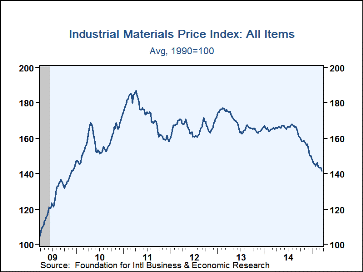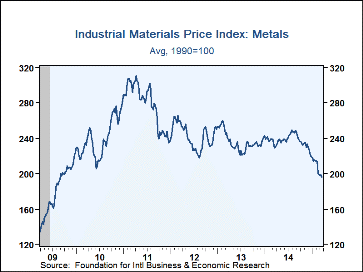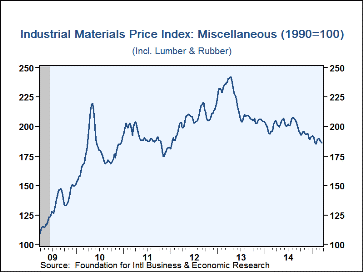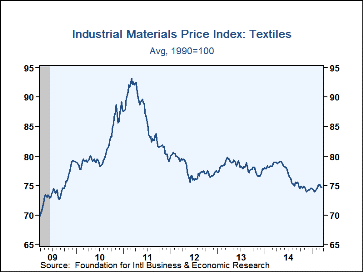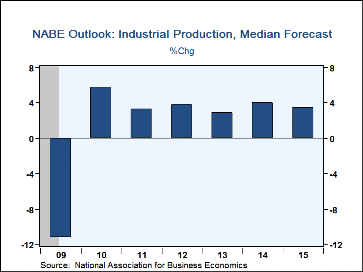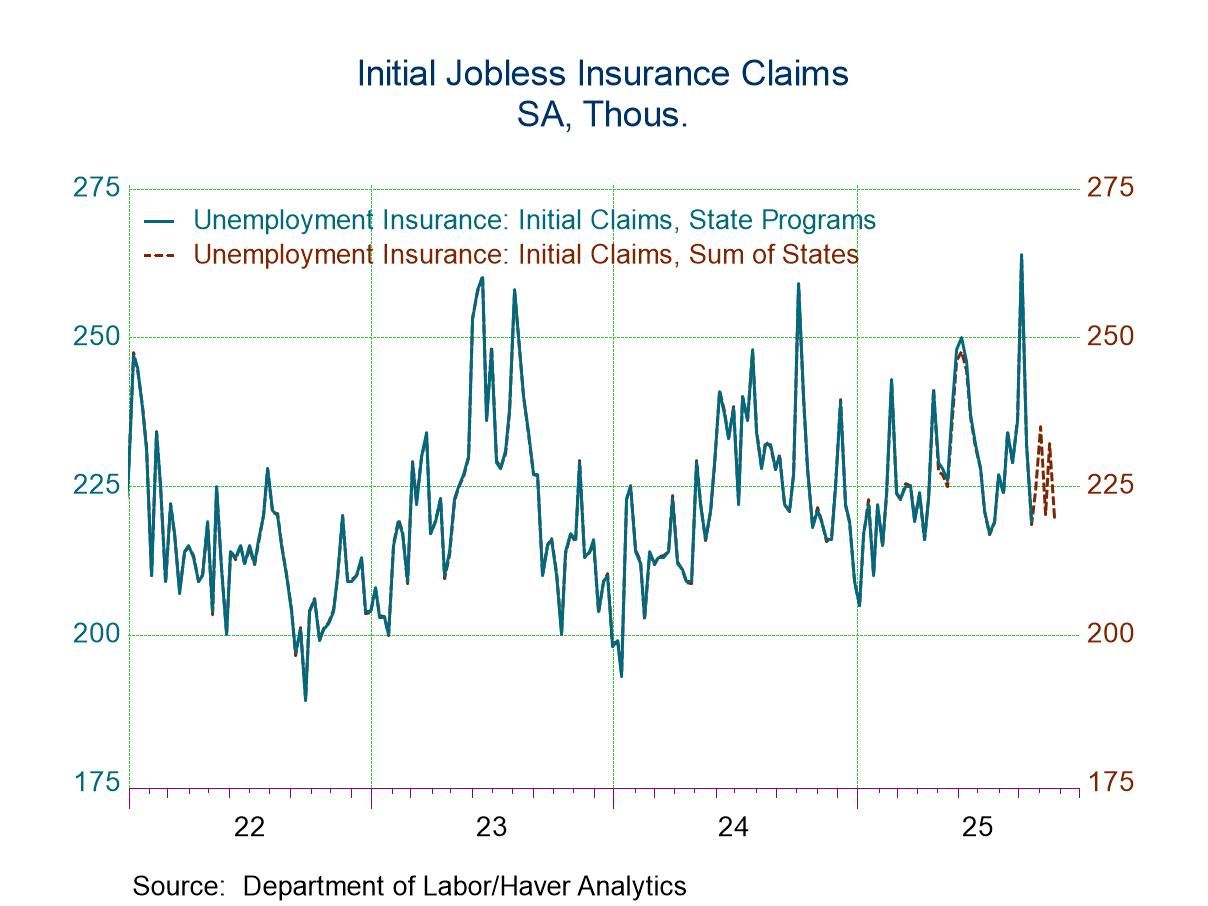 Global| Mar 20 2015
Global| Mar 20 2015FIBER: Industrial Commodity Prices Post Broad-Based Declines
by:Tom Moeller
|in:Economy in Brief
Summary
Recent strength in the U.S. factory sector has done little for industrial commodity prices as growth abroad struggles. The industrial commodity price index from the Foundation for International Business and Economic Research (FIBER) [...]
Recent strength in the U.S. factory sector has done little for industrial commodity prices as growth abroad struggles. The industrial commodity price index from the Foundation for International Business and Economic Research (FIBER) declined this week to the lowest level since December 2009. Overall, prices have fallen 14.3% y/y and 15.2% since late-August.
The crude oil & benzene grouping led the decline with a more than one-third drop in prices since early last year. The price for a barrel of WTI crude oil plunged to $43.79 yesterday (-56.2% y/y), down 59.0% from its $106.69 high in June of last year. Prices for the petro-chemical benzene have followed the way down. Prices rallied a bit last week, but they remained 55.7% lower than where they were in January of last year. Metals prices also have improved of late, but they are 21.7% lower since August (-14.9% y/y). Steel scrap prices led the way lower with a 37.5% y/y decline and they are down by nearly one-half from the 2011 high. Copper scrap prices have been similarly weak, posting a 41.9% decline from the 2011 high (-11.7% y/y). Aluminum prices have weakened 14.8% since the late-November high but they remain up 6.0% y/y. In the miscellaneous materials grouping, prices recently rallied but have trended 23.1% lower since August 2013 (-8.6% y/y). Natural rubber prices improved with a 16.4% rise (-20.7% y/y) since the December low. Prices for framing lumber, however, remain weak. They're down 18.1% since early September (-13.4% y/y), reaching the lowest level since 2013. Structural panel prices have been relatively firm, off 9.7% since early November (+2.2% y/y). Prices remain roughly one-quarter from the April 2013 high.Textile prices have shown relative strength with movement roughly sideways. Cotton prices have been flat since November (-30.8% y/y) but burlap prices have risen 11.1% since October (+6.2% y/y).
Future support for commodity prices may be on the way. The current industrial output projection from the National Association for Business Economics calls for 3.5% growth in industrial production in 2015. During the last ten years, there has been a 52% correlation between the three-month change in prices and the change in industrial output.
Commodity price data can be found in Haver's DAILY, WEEKLY, USECON and CMDTY databases.
| FIBER Industrial Materials Price Index (1990=100) | 3/19/15 | Y/Y % | 2014 | 2013 | 2012 |
|---|---|---|---|---|---|
| All Items | 141.68 | -14.3 | 163.3 | 169.0 | 166.3 |
| Textiles | 74.96 | -5.1 | 76.4 | 78.2 | 77.8 |
| Cotton (cents per pound) | 60.66 | -30.8 | 73.4 | 79.6 | 74.4 |
| Metals | 195.04 | -14.9 | 237.5 | 236.3 | 242.7 |
| Aluminum ($ per metric ton) | 1,771.00 | 6.0 | 1,864.6 | 1,846.2 | 2,016.6 |
| Copper Scrap (cents per pound) | 258.14 | -11.7 | 311.2 | 332.4 | 360.3 |
| Steel Scrap ($ per ton) | 226.67 | -37.5 | 357.9 | 346.0 | 366.5 |
| Crude Oil & Benzene | 136.80 | -36.2 | 204.7 | 207.7 | 204.0 |
| Crude Oil (WTI, $ per Barrel) | 43.79 | -56.2 | 93.2 | 97.9 | 94.2 |
| Miscellaneous | 186.31 | -8.6 | 199.4 | 218.3 | 205.2 |
| Framing Lumber ($ per 1000 board ft.) | 335 | -13.4 | 383 | 383 | 321 |
| Natural Rubber (cents per pound) | 130.07 | -20.7 | 139.7 | 190.0 | 211.8 |
Tom Moeller
AuthorMore in Author Profile »Prior to joining Haver Analytics in 2000, Mr. Moeller worked as the Economist at Chancellor Capital Management from 1985 to 1999. There, he developed comprehensive economic forecasts and interpreted economic data for equity and fixed income portfolio managers. Also at Chancellor, Mr. Moeller worked as an equity analyst and was responsible for researching and rating companies in the economically sensitive automobile and housing industries for investment in Chancellor’s equity portfolio. Prior to joining Chancellor, Mr. Moeller was an Economist at Citibank from 1979 to 1984. He also analyzed pricing behavior in the metals industry for the Council on Wage and Price Stability in Washington, D.C. In 1999, Mr. Moeller received the award for most accurate forecast from the Forecasters' Club of New York. From 1990 to 1992 he was President of the New York Association for Business Economists. Mr. Moeller earned an M.B.A. in Finance from Fordham University, where he graduated in 1987. He holds a Bachelor of Arts in Economics from George Washington University.


